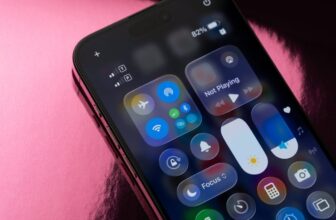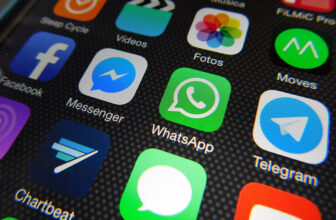Something I think about from time to time is the fact that, with current devices, there’s no inherent need to own a TV. It certainly made sense to buy one in the pre-internet age, when a TV was the best way to get news, and the only way to get video entertainment without going to a theater or arcade. Today, the laptop I’m writing this on has a 16-inch OLED HDR screen, and can download virtually any movie or TV show that’s ever been digitized. My iPhone has less screen and storage space, but would still be an acceptable way to watch Casablanca or The Wire with the right set of headphones.
I can’t see myself ditching TVs anytime soon, though. In fact, I’d probably buy a replacement — or start budgeting for one — the instant anything happened to the one in my living room. There’s just no substitute, at least until augmented reality headsets become both cheap and ubiquitous. There’s going to be more to say on that point as I progress through this list.
Immersion
Movies shouldn’t just be another distraction
Another thing I think about frequently is David Lynch’s famous interview in which he said — and this is the family-friendly summary — that if you’d watched a movie on your phone, you hadn’t really seen it. He later changed his tune, presumably because of improved technology, but he did have a point. The experience of watching a movie in a theater is fundamentally different from watching it on a phone or tablet. The screen fills your field of vision, and the sound is booming, and sometimes seat-rattling. For two or three hours, it’s about the only thing you can focus on. The best movies are great escapism or capital-A Art.
Watching something on a phone, tablet, or laptop can never recreate the theater experience, no matter how good your headphones are. There’s too much potential for distraction — if it’s not notifications or surroundings, it’s the tactile sensation of holding something, or the temptation to switch to another app. My iPad gets so messy from touch gestures that I refuse to watch anything on it until I’ve wiped it down. TVs still aren’t perfect, but they’re large enough now that they can fill your field of vision if you sit a reasonable distance. Pair that with a quality soundbar and mood lighting, and you’re most of the way towards sitting in a cinema.
AR/VR headsets have the potential to take things even further. Already, models like the Quest 3, Vision Pro, Bigscreen Beyond, and Galaxy XR can simulate theater-sized screens, and completely cut you off from the real world if you feel like it. The only significant obstacles at this point are cost, comfort, and battery life — the Quest 3 is “cheap” at $500, and most headsets are still bulky, making them awkward for some users. As for battery life, you won’t find a model that can last more than three hours without being plugged in. We’re probably a few years away from being able to share an AR-only Lord of the Rings marathon with friends.
The social aspect
In the right company, that is
One of my favorite entertainment experiences, period, was the weekly get-togethers my friends and I held to watch new episodes of Game of Thrones. While the final season was a disappointment, everything running up to that was fantastic. We’d laugh at the funny scenes, react with horror at the gruesome ones, and share our surprise at plot twists. Since this was in Austin, we’d sometimes chow down on pizza or Tex-Mex food together.
It just isn’t possible to recreate this with a small screen, at least without serious compromises. No group likes huddling around a tablet or laptop, and technologies like Apple SharePlay and Google Live Sharing are poor substitutes, mostly because they have content and platform restrictions. Any kind of remote viewing session is going to feel more like a glorified Zoom meeting than a party.
Sometimes the content itself is enhanced by sharing with a live audience. I’m primarily thinking of comedies — you might not like or understand every joke, but if the people around you are laughing, you might still have a good time. Likewise, horror movies can alternately be intensified or less disturbing if you’re sharing them with the right crew.
For others, avoiding crowds is one of the benefits of a personal device, and to each their own in that regard. It’s hard to deny the appeal of sharing a movie or show when the crowd is in sync with you, however.
Convenience
Drop-in, drop-out
Okay, clearly, phones and tablets are often the most convenient devices. They let you watch video (almost) anywhere at any time, whereas a TV is meant to sit in one place for eternity. But within a home viewing context, TVs do have some advantages.
One of these is simply having a dedicated screen, usually in a space purpose-built for comfort. There’s no need to find the best way to prop something up, or go fetch my headphones — I can just flop on the couch, grab the remote, and go to town. I don’t even have to put anything in Do Not Disturb mode, as long as I remember to put my phone’s ringer on Silent. In my case, I’ve also connected my Steam Deck if I want to play something like Cyberpunk 2077 or Vampire Survivors.
Ironic as it is given my talk about immersion, another perk is the ability to do things other than watch or play. During the pandemic, all I had to stay fit was a pair of adjustable dumbbells — so I made the best of it, putting on familiar movies like Rocky IV or Goldfinger during my workouts. These days I’m back at the gym, but when I’m doing my weekly meal prep, I’ll put on long-form YouTube videos that I can quickly glance at, or casually listen to when I need to wander over to the fridge or sink.
It’s the little things
Small screens have been unbelievably sharp for years now, to the extent that it’s hard to discern any pixelation. Unfortunately, that’s really the only point of high resolutions on a phone or tablet, because we’re well past the point of them adding noticeable detail. It’s basic optics. Your eye can only make out so much detail on a small screen unless you get ridiculously close, as is the case with AR and VR eyepieces.
TVs don’t have this issue, so it’s possible to catch all the little pieces that filmmakers include. These could be Easter eggs in a Marvel movie, or the sign puns in Bob’s Burgers. Often, though, it’s just the sheer amount of work that goes into set and costume design. One of the reasons Blade Runner remains popular is that its version of Los Angeles is so detailed, it feels authentic — never mind that we’re still struggling with the concept of a flying car or an android that can fold laundry.
Sometimes, movies lose a surprising amount of their impact on small screens. One useful example is 2001: A Space Odyssey, which was shot in Super Panavision 70. It’s a slow movie, but partly because you’re meant to feast on everything going on in its epic tableaus. It’s difficult to get the proper effect on a TV, much less a phone or tablet a fraction of the size. It’s no wonder some people think the movie is boring. The next time 2001 shows in a local theater, you owe it to yourself to go.
Trending Products

Wireless Keyboard and Mouse Combo, ...

ASUS Vivobook Go 15.6” FHD Slim L...

HP 14″ HD Laptop | Back to Sc...

ASUS TUF Gaming GT502 ATX Full Towe...

Lenovo New 15.6″ Laptop, Inte...

Acer Nitro 31.5″ FHD 1920 x 1...

Logitech Signature MK650 Combo for ...

Acer Chromebook 314 CB314-4H-C2UW L...

HP 14″ Ultral Light Laptop fo...









